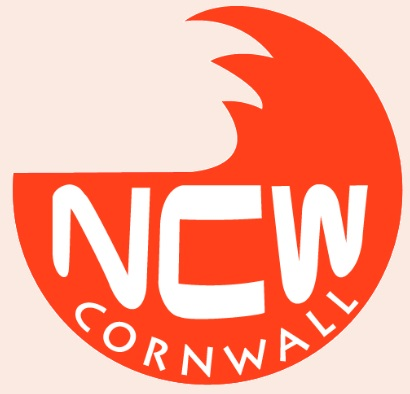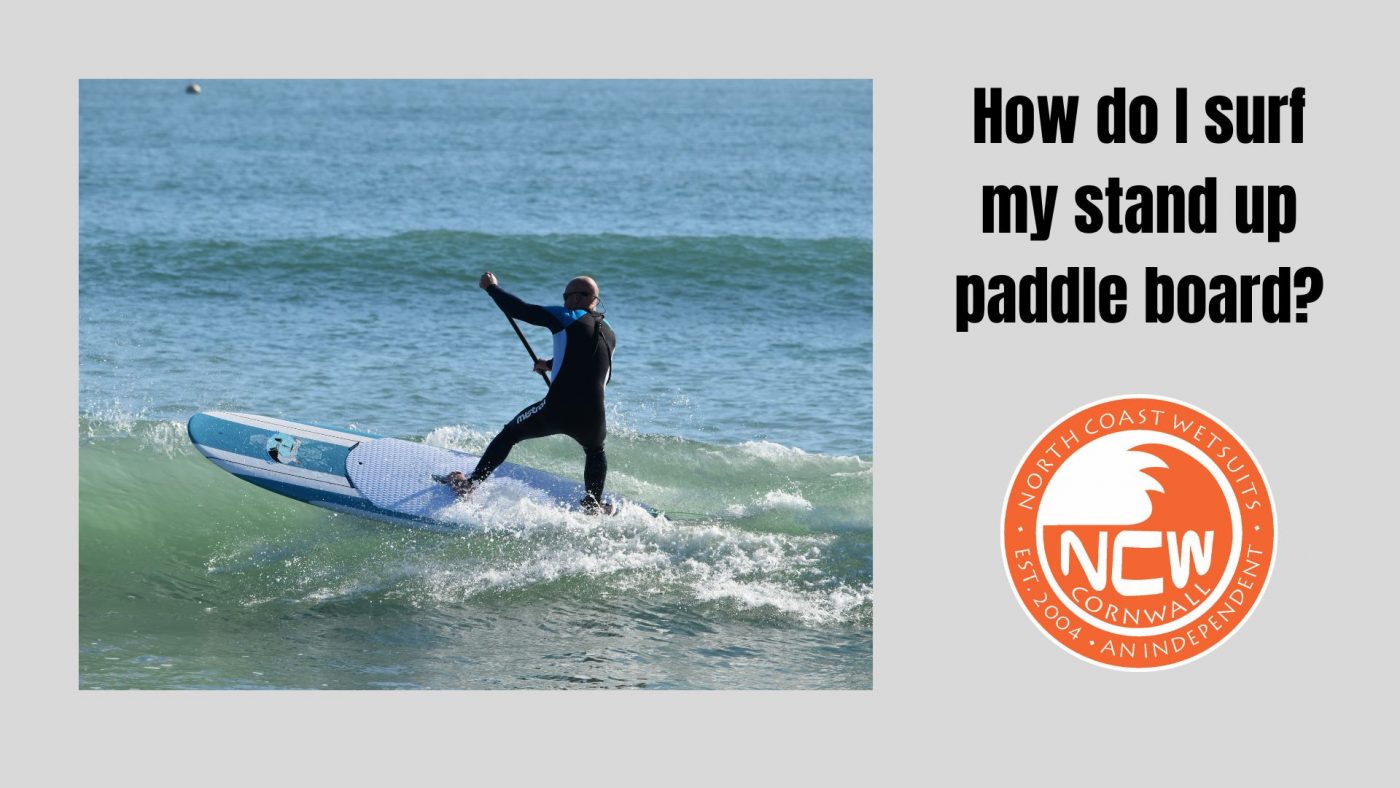Stand up paddle board wave riding – or SUP surfing – is just the first step on your journey to becoming a stand up paddling SUPerstar. Once you’re happily dropping in and gliding along the unbroken face of a liquid wall there’s a whole heap of new skills to learn.
A green (or blue) watery canvas is just begging for you to draw your own unique lines as an artist would do their brush. Get all punk, rip a powerful arc and cut it up sharp and snappy – whatever floats your boat (or rather SUP).
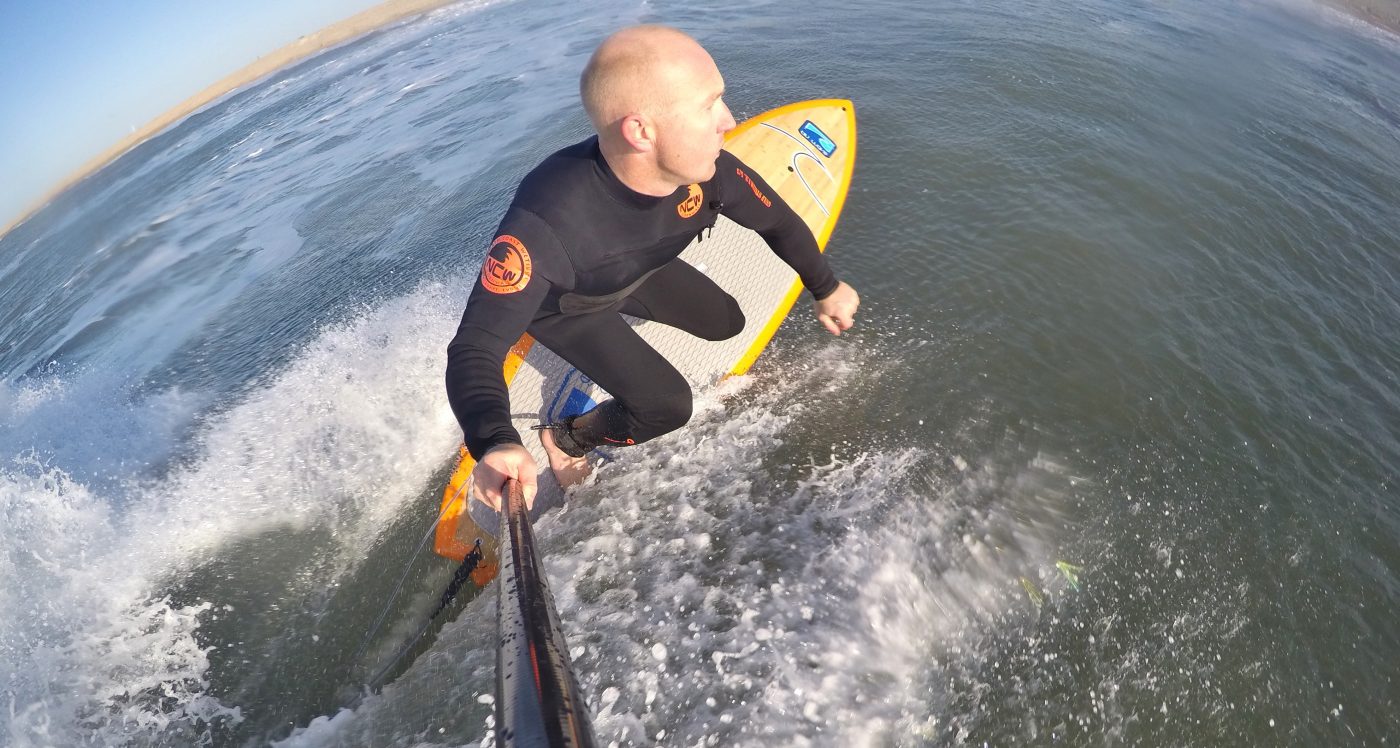
Most stand up paddle board surfers who have progressed from simply catching waves will be quite happy taking off and gliding down the line – probably stoked just to be gliding on an unbroken wave face. To switch it up and become a more dynamic rider you’ll need to learn how to bottom turn correctly as it’s this one manoeuvre which will set you up for the rest of your ride. A solid off the bottom is key to successful surfing, whether you wield a paddle or not.
The front side stand up paddle board surfing bottom turn.
A cranking bottom turn can be split (generally) into two types. A steep and fast wave turn or mush burger bottom turn. Most of us will have to complete both at some point – unless you live in a tropical paradise blessed with perfect surf.
The easiest to accomplish with any style is when you have speed from the get go. Taking off on the peak (not necessarily big wave) will set you up. Even gutless slop has its steeper sections.
Your chosen wave needs to be jacking up as your perfectly timed take off happens. Dropping in you’re aiming to rock the board over onto its inside rail as you hit trough (or bottom). With this increased speed you can stand further back, closer to the tail, which will allow your fins to engage and bite. Keep your knees bent, your trunk (stomach and chest) tight, shoulders square and your head looking along the wave in the direction of travel – don’t feet gaze!
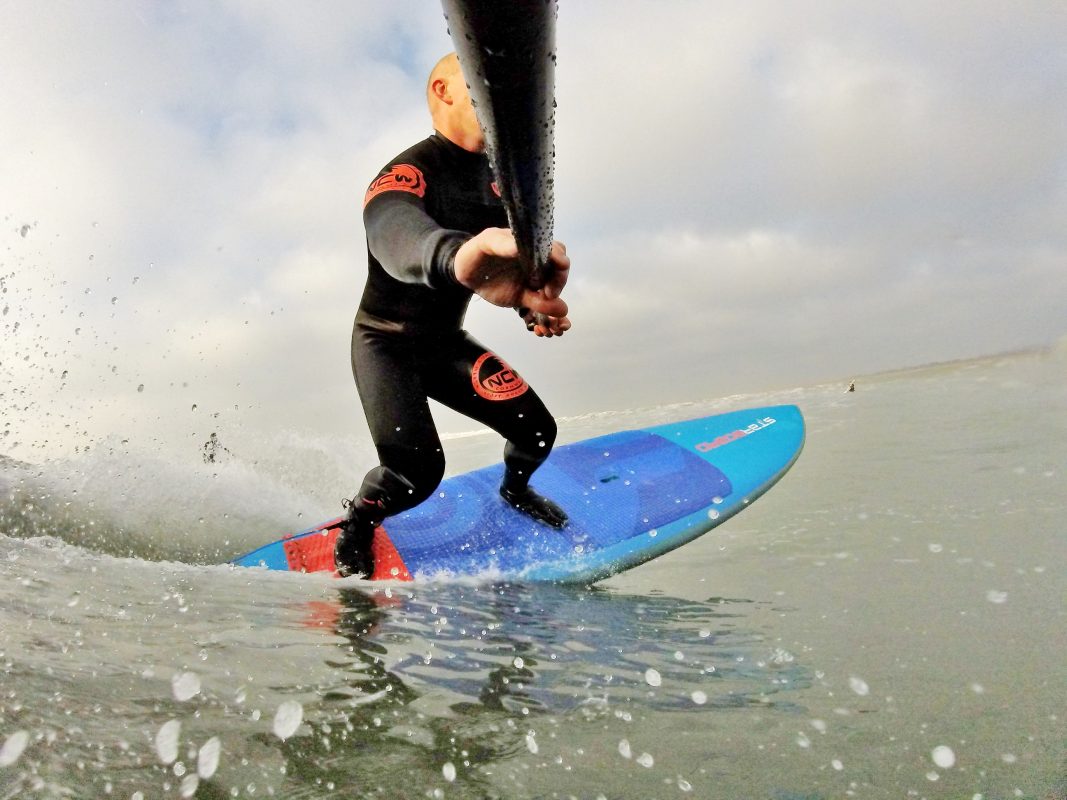
Extra paddle strokes help!
Put a few extra paddle strokes in, for even more speed, and as you crank off the bottom you should be bringing your paddle forward ready for the next move. If you overcook your bottom turn then levelling your paddle with your body and leaning on it slightly will stabilise you. A decent bottom turn should slingshot you into the next section. There should be a slight feeling of weightlessness as you unwind, projecting towards the lip with speed.
Soft gutless waves need an angled take off to gather momentum – you should also learn how to pump up and down as this also increases speed. Once you have enough ‘oomph’, drop into the trough and complete your bottom turn as described above.
However you approach your stand up paddle board bottom turn depends on how well you’ve ‘read’ the wave – something that comes with experience and time in the surf.
The stand up paddle board surfing front side top turn
Having mastered the bottom turn it’s time to focus on your top turn – the next milestone on the road to SUPer stardom.

Aiming to project up to the lip, just as it’s breaking, and use the froth/curl to send you back down into the trough – throwing buckets of spray as you do so (ideally) – is the aim of the game. Do this right and it’s a spectacular looking move and will solidify your rep as a bona fide stand up paddle surfing ripper!
Much of the top turn is about timing and reading how the wave will (and is) breaking. If the swell looks like a solid wall then carve along until you spot it about to throw or close out. Your vision should be focused down the line helping identify sections to smack – or scoot around.
Drop into the trough, perform your dynamic bottom turn and crank it up towards the ‘feathering’ lip. If you’ve come off the bottom correctly then you’ll have a ton of speed. Your paddle should move forwards in anticipation and vision should be eyeballing the lip.
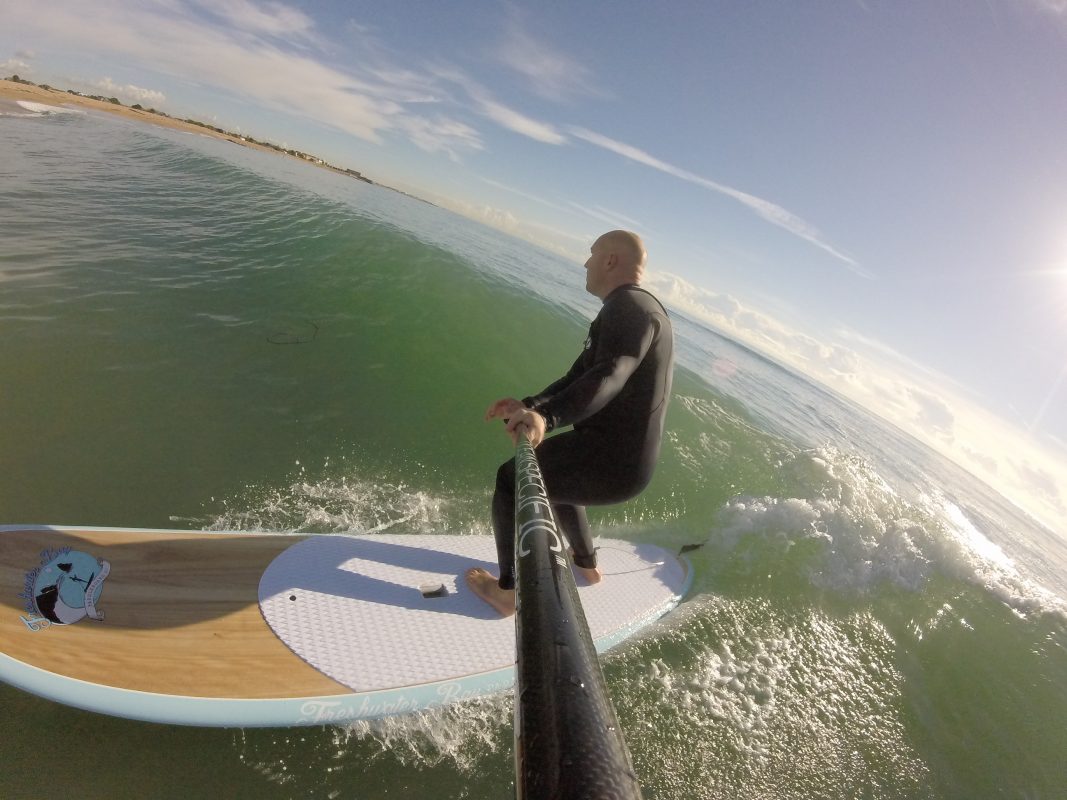
A sense of weightlessness should be felt as you alter position, which is fine for a split second. About half way up the wave face start shifting to your outside rail with the aim of exposing the underside of the board. Hitting the wave’s apex you should be banked right over onto the SUP’s rail, paddle embedded in the lip, head looking in the direction of travel and your body low and compact ready to uncoil and rebound.
As you blast to the top stick a paddle stroke in to generate more speed and projection. With the blade now behind you, lean on it slightly and push with your back foot. This will ‘squirt’ the tail sending spray flying or ping the nose into a vertical climb. (The faster you’re travelling the better the turn will be).
If the wave ‘shuts down’ then that’s usually the end of your ride, however, if a clean section walls up you’ll boost along with increased speed and can get ready for another move.
Summing up.
A solid bottom turn is the key to stand up paddle board wave riding prowess. Master this first and a whole host of options will present themselves. The off the top described is just one of these but there are plenty more types of turn you can learn.
The key thing to remember with riding waves is that it’s all open to interpretation which allows riders to develop their own style. There is no right way of doing things – if there were the sport of stand up paddle surfing would be rather dull and you’d get bored.
For more info about stand up paddle surfing or SUP in general get in touch with us here at NCW.
